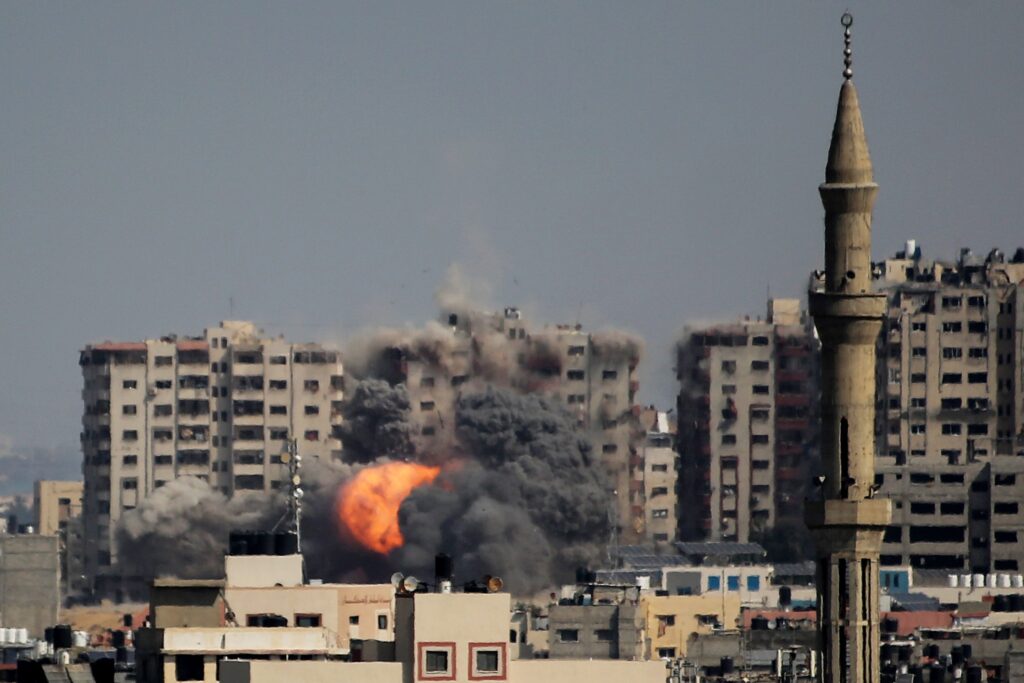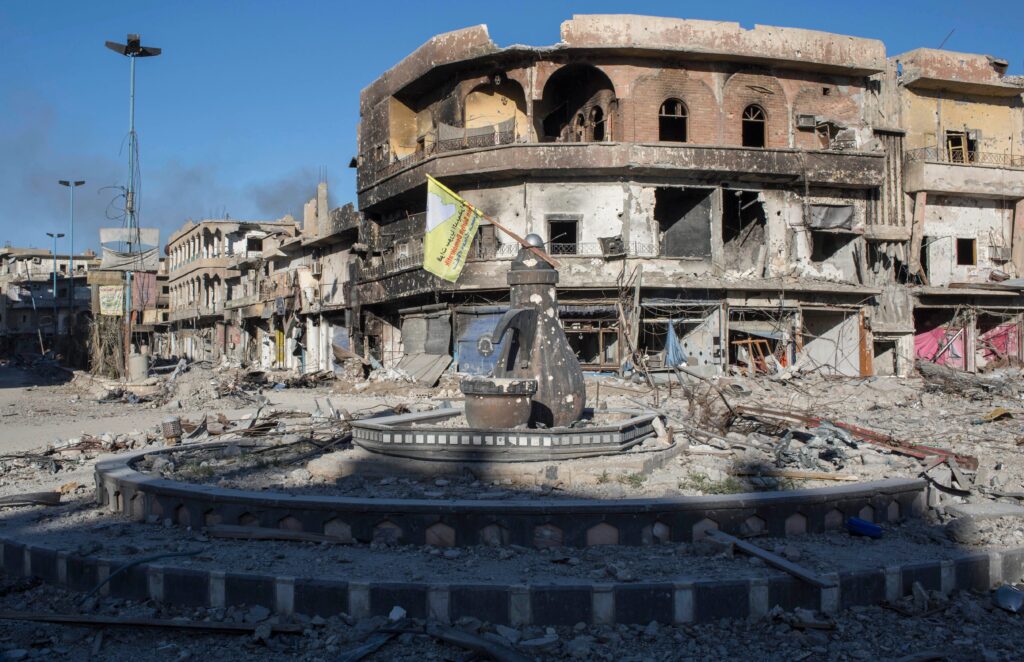- Israel said it dropped 6,000 bombs on the Gaza Strip during the first six days of war with Hamas.
- That's more bombs than the US-led coalition dropped in any month during the fight against ISIS.
- Allied forces dropped 5,000 bombs in August 2017 — at the peak of their air campaign.
Israel has been at war with Hamas for less than a week, and its forces are already expending a massive amount of ordnance.
In just six days, Israeli fighter jets dropped more bombs on the Gaza Strip than the US-led coalition dropped in any month of its fight against the Islamic State, even during the height of the multi-national air campaign against the terror group.
Israel began its aerial bombardment of Gaza on Saturday immediately after Hamas militants launched a series of surprise terror attacks against the country, killing at least 1,300 people — mostly civilians — and injuring over 3,200 more. The group also took an estimated 150 people hostage.
By Thursday, the Israeli Air Force (IAF) said it had dropped "about 6,000 bombs against Hamas targets in the densely populated coastal enclave." The relentless campaign, which was ongoing as of Friday evening local time, has reduced entire neighborhoods to rubble and sent people scrambling for shelter. At least 1,500 Palestinians have been killed and more than 6,600 injured, according to Gaza's health ministry.

The figure provided by the IAF far exceeds the maximum number of bombs dropped in any given month from 2015 to 2019 during Operation Inherent Resolve, which is the US military's name for the multinational campaign against ISIS.
According to unclassified airpower data published in December 2019 by US Air Forces Central Command (AFCENT), during the first two years of that stretch, the coalition averaged some 2,500 bombs dropped each month on targets across Iraq and Syria.
But the air war seriously intensified the following year, 2017, with an average of around 3,300 bombs dropped each month from fighter jets and drones. May, June, and July all saw the coalition release over 4,000 weapons, new highs during Operation Inherent Resolve. But that August saw a record 5,075 bombs dropped, marking the only time that figure ever surpassed 5,000. The intense bombing coincided with the brutal months-long Battle of Raqqa — a Syrian city that served as the de-facto ISIS capital in 2014.
"Roughly half of all munitions dropped that month by coalition aircraft were released over Raqqa," the RAND Corporation, a California-based think tank, wrote in a 2021 analysis about the air campaign against ISIS. "Although the coalition has not reported publicly the precise breakdown of airframes used to support the Raqqa offensive, the US military has confirmed that bombers, fighters, attack aircraft, and RPAs were all employed in the operation," it added, referring to remotely piloted aircraft, or drones.

Averaged out, Israel's 6,000 bombs dropped on Gaza between October 7 and October 12 comes out to 1,000 per day — smashing the average of 164 bombs dropped per day by the US-led coalition in August 2017. Both Israeli and US officials — including President Joe Biden — have compared Hamas to ISIS in the wake of last weekend's assaults.
That IAF figure also tops some annual tallies recorded during the US war in Afghanistan, in which there was no year between 2013 and 2018 where American forces dropped more than 4,400 bombs on the country, according to the AFCENT data.
In 2018 and 2019 those figures rose to 7,362 and 7,423, respectively, surpassing the Israeli figures. But with at least 250,000 square miles and 40 million people, Afghanistan is significantly larger than Gaza, which is around 140 square miles and has roughly 2 million inhabitants.
Israeli officials have signaled that the ongoing air campaign — which has caused much destruction — is a precursor to a major ground offensive in Gaza. The Israel Defense Forces (IDF) say the purpose of the military's efforts are to completely crush Hamas in retaliation for the ruthless massacre last weekend.
Late on Thursday, the military informed the United Nations that over 1 million people living in northern Gaza need to immediately evacuate to the southern part of the coastal enclave, which has been under an Israeli siege for several days. The order was met with alarm by UN and human rights organization officials, who are urging deescalation as a way to prevent the worsening of an already dire humanitarian situation.
